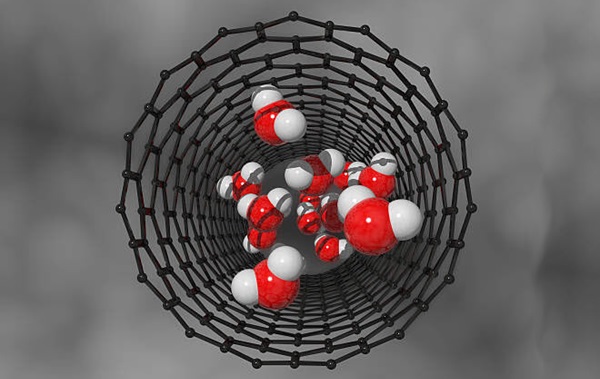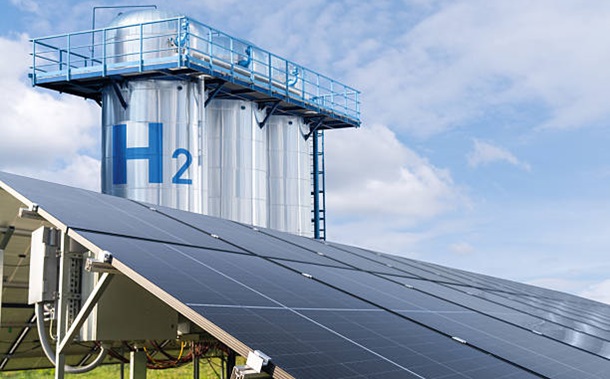Reindustrialization Plan Using the DPSIR and TOPSIS Methods
Downloads
(De)industrialization is a phenomenon that affects the economic development of developed and developing countries. However, there is a lack of studies that evaluate strategies to promote the industrialization of a country through the information of industry experts. Objective: this article aims to develop a reindustrialization plan based on strategies to increase the relative participation of Brazilian industry in the Gross Domestic Product (GDP) in order to mitigate the Brazilian deindustrialization process. Method: the method used was DPSIR (Driving Forces, Pressures, State, Impacts, and Responses) in order to map information from specialists directly involved in the theme of industrial development in the areas of economics, public law, scientific research, public management, and private management. In addition, the TOPSIS method was used to prioritize the specialists' responses in order of urgency of implementation. Findings: the main result of this work revealed the strategies that should be prioritized to promote the country's industrialization. Novelty: this research served as a basis for the elaboration of the Brazilian Reindustrialization Plan, presented at the end of the article.
Downloads
[1] Morceiro, P. (2012). Deindustrialization in the Brazilian economy in the period 2000-2011: approaches and indicators. Academic Culture, São Paulo, Brazil.
[2] Fries, C. E., Müller Filho, R., Ferentz, D., & Christmann, F. (2020). Diagnosis of the Level of Development and Impact Factors on the Implementation of Industry 4.0 in the Industrial Sector of Santa Catarina. Navy Operational Research and Logistics Symposium - Online Publication, 1139–1154. doi:10.5151/spolm2019-084. (In Portuguese).
[3] Furtado, C. (2020). The myth of economic development. John Wiley & Sons, Hoboken, United States.
[4] Tavares, M. (1979). From import substitution to financial capitalism: essays on the Brazilian economy. Zahar Editores, Rio de Janeiro, Brazil.
[5] Jenkins, R., & De Freitas Barbosa, A. (2012). Fear for manufacturing? China and the future of industry in Brazil and Latin America. China Quarterly, Quarterly,209(209), 59–81. doi:10.1017/S0305741011001482.
[6] Jenkins, R. (2015). Is Chinese Competition Causing Deindustrialization in Brazil? Latin American Perspectives, 42(6), 42–63. doi:10.1177/0094582x15593553.
[7] Suzigan, W., & Furtado, J. (2006). Industrial policy and development. Journal of Political Economy, 26(2), 163–185. doi:10.1590/s0101-31572006000200001.
[8] Mazzucato, M. (2024). The inclusive entrepreneurial state: collective wealth creation and distribution. Oxford Open Economics, 3(Supplement_1), i1031–i1039. doi:10.1093/ooec/odad101.
[9] van Neuss, L. (2018). Globalization and deindustrialization in advanced countries. Structural Change and Economic Dynamics, 45, 49–63. doi:10.1016/j.strueco.2018.02.002.
[10] Bresser-Pereira, L. C., & Gala, P. (2010). Structuralist macroeconomics of development. Journal of Political Economy, 30(4), 663–686. doi:10.1590/s0101-31572010000400007. (In Portuguese).
[11] Bárcena, A., Bielschowsky, R., & Torres, M. (2022). ECLAC's thinking (2009-2018): Toward a neostructuralist development strategy based on a rights-based approach. El Trimestre Económico, 89(353), 73–109. doi:10.20430/ete.v89i353.1424. (In Spanish).
[12] Marttunen, M., Lienert, J., & Belton, V. (2017). Structuring problems for Multi-Criteria Decision Analysis in practice: A literature review of method combinations. European Journal of Operational Research, 263(1), 1–17. doi:10.1016/j.ejor.2017.04.041.
[13] Bell, S. (2012). DPSIR = A Problem Structuring Method? An exploration from the “imagine” approach. European Journal of Operational Research, 222(2), 350–360. doi:10.1016/j.ejor.2012.04.029.
[14] Ferraz, D., Falguera, F. P. S., Mariano, E. B., & Hartmann, D. (2021). Linking Economic Complexity, Diversification, and Industrial Policy with Sustainable Development: A Structured Literature Review. Sustainability, 13(3), 1265. doi:10.3390/su13031265.
[15] van Neuss, L. (2018). The Drivers of Structural Change. Journal of Economic Surveys, 33(1), 309–349.. doi:10.1111/joes.12266.
[16] Rodrik, D. (2015). Premature deindustrialization. Journal of Economic Growth, 21(1), 1–33. doi:10.1007/s10887-015-9122-3.
[17] Oliveira, C. A. (2003). Industrialization process: from original capitalism to backwardness. Universidade Estadual Paulista (UNESP), São Paulo, Brazil.
[18] Kim, K. M., & Kwon, H.-K. (2017). The State’s Role in Globalization: Korea’s Experience from a Comparative Perspective. Politics & Society, 45(4), 505–531. doi:10.1177/0032329217715614.
[19] Lin, J. Y., & Wang, Y. (2020). Seventy Years of Economic Development: A Review from the Angle of New Structural Economics. China and World Economy, 28(4), 26–50. doi:10.1111/cwe.12340.
[20] Harvey, D. (2007). A Brief History of Neoliberalism. Oxford University Press, Oxford, United Kingdom.
[21] Harvey, D. (2014). Seventeen Contradictions and the End of Capitalism. Oxford University Press, Oxford, United Kingdom.
[22] Ruiz, R. M. (2006). Polarizations and inequalities: regional development in China. Text for Discussion. CEDEPLAR / FACE / UFMG, Belo Horizonte, 1-34.
[23] Masiero, G., & Coelho, D. B. (2014). Chinese industrial policy as a determinant of its going global strategy. Revista de Economia Politica, 34(1), 139–157. doi:10.1590/S0101-31572014000100009.
[24] Nolan, P. (2002). China and the global business revolution. Cambridge Journal of Economics, 26(1), 119–137. doi:10.1093/cje/26.1.119.
[25] Corden, W. M. (1984). Booming sector and Dutch disease economics: Survey and consolidation. Oxford Economic Papers, 36(3), 359–380. doi:10.1093/oxfordjournals.oep.a041643.
[26] Kaldor, N. (2021). The role of taxation in economic development. El Trimestre Económico, 88(352), 1215–1244. doi:10.20430/ete.v88i352.1346. (In Spanish).
[27] Di Berardino, C., D’Angelo, S., Lábaj, M., & Majzlíková, E. (2024). How regional is the manufacturing value chain of the main European countries? Economics of Innovation and New Technology, 34(3), 349–366. doi:10.1080/10438599.2024.2342949.
[28] Jedwab, R., Ianchovichina, E., & Haslop, F. (2025). The employment profile of cities around the world: Consumption vs. production cities and economic development. World Development, 188, 106883. doi:10.1016/j.worlddev.2024.106883.
[29] Callegari, J., Melo, T. M., & Carvalho, C. E. (2018). The peculiar insertion of Brazil into global value chains. Review of Development Economics, 22(3), 1321–1342. doi:10.1111/rode.12386.
[30] Bacha, E. & Bolle, M. (2015). The future of industry in Brazil: deindustrialization under debate. Civilização Brasileira, Rio de Janeiro, Brazil. (In Portuguese).
[31] Mishra, A. K., Theertha, A., Amoncar, I. M., & R L, M. (2022). Equity market integration in emerging economies: a network visualization approach. Journal of Economic Studies, 50(4), 696–717. doi:10.1108/jes-07-2021-0343.
[32] CNI-National Confederation of Industry. (2023). Profile of the Brazilian Industry. CNI-National Confederation of Industry, Brasília, Brazil. Available online: https://industriabrasileira.portaldaindustria.com.br/grafico/total/producao/#/industria-total (accessed on June 2025). (In Portuguese).
[33] Nassif, A., Feijó, C., & Araújo, E. (2015). Structural change and economic development: Is Brazil catching up or falling behind? Cambridge Journal of Economics, 39(5), 1307–1332. doi:10.1093/cje/beu052.
[34] Sauer, S., Balestro, M. V., & Schneider, S. (2017). The ambiguous stance of Brazil as a regional power: piloting a course between commodity-based surpluses and national development. Globalizations, 15(1), 32–55. doi:10.1080/14747731.2017.1400232.
[35] Magacho, G. R., McCombie, J. S. L., & Guilhoto, J. J. M. (2018). Impacts of trade liberalization on countries’ sectoral structure of production and trade: A structural decomposition analysis. Structural Change and Economic Dynamics, 46, 70–77. doi:10.1016/j.strueco.2018.04.003.
[36] Feijó, F. T., & Steffens, C. (2015). International trade, labor allocation and the issue of deindustrialization in Brazil: an approach using computable general equilibrium. Revista de Economia Contemporânea, 19(1), 135–161. doi:10.1590/198055271916. (In Portuguese).
[37] Souza, F. E. P. de. (2017). So that this time it will be different. Estudos Avançados, 31(89), 111–123. doi:10.1590/s0103-40142017.31890012. (In Portuguese).
[38] Oreiro, J. L., Manarin D’Agostini, L. L., & Gala, P. (2020). Deindustrialization, economic complexity and exchange rate overvaluation: The case of Brazil (1998-2017). PSL Quarterly Review, 73(295), 313–341. doi:10.13133/2037-3643_73.295_3.
[39] de Paula, G.M. (2017). Deindustrialization in Brazil?. The New Brazilian Economy. Palgrave Macmillan, New York, United States. doi:10.1057/978-1-137-46297-8_4.
[40] Feijo, C., & Lamônica, M. T. (2019). Policy space in a financially integrated world: The Brazilian case in the 2000s. Panoeconomicus, 66(1), 51–68. doi:10.2298/PAN160502002F.
[41] Bernard, A. B., Smeets, V., & Warzynski, F. (2017). Rethinking deindustrialization. Economic Policy, 32(89), 5–38. doi:10.1093/epolic/eiw016.
[42] Squeff, G. C. (2012). Deindustrialization in debate: theoretical aspects and some stylized facts of the Brazilian economy. Radar: technology, production and foreign trade. Instituto de Pesquisa Econômica Aplicada (IPEA), Brasília, Brazil. Available online: https://portalantigo.ipea.gov.br/agencia/images/stories/PDFs/livros/livros/20150415_livro_dinamica_macrossetorial.pdf (accessed on June 2025).
[43] Trindade, J. R., Cooney, P., & de Oliveira, W. P. (2016). Industrial Trajectory and Economic Development: Dilemma of the Re-primarization of the Brazilian Economy. Review of Radical Political Economics, 48(2), 269–286. doi:10.1177/0486613415591807.
[44] Santos, P. F. A., & Spolador, H. F. S. (2018). Sectoral productivity and structural change in Brazil: An analysis for the period 1981 to 2013. Revista Brasileira de Economia, 72(2), 217–248. doi:10.5935/0034-7140.20180011. (In Portuguese).
[45] Bresser-Pereira, L. C., Araújo, E. C., & Costa Peres, S. (2020). An alternative to the middle-income trap. Structural Change and Economic Dynamics, 52, 294–312. doi:10.1016/j.strueco.2019.11.007.
[46] Gaulard, M. (2015). The Brazilian deindustrialization: Financialization is not guilty. Revista de Economia Politica, 35(2), 227–246. doi:10.1590/0101-31572015v35n02a02.
[47] Oreiro, J. L., Punzo, L. F., & Araújo, E. C. (2012). Macroeconomic constraints to growth of the Brazilian economy: Diagnosis and some policy proposals. Cambridge Journal of Economics, 36(4), 919–939. doi:10.1093/cje/bes010.
[48] Cypher, J. M. (2015). Emerging Contradictions of Brazils Neo-Developmentalism: Precarious Growth, Redistribution, and Deindustrialization. Journal of Economic Issues, 49(3), 617–648. doi:10.1080/00213624.2015.1071961.
[49] Felipe, J., Mehta, A., & Rhee, C. (2019). Manufacturing matters⋯but it’s the jobs that count. Cambridge Journal of Economics, 43(1), 139–168. doi:10.1093/cje/bex086.
[50] Lábaj, M., & Majzlíková, E. (2022). Drivers of deindustrialisation in internationally fragmented production structures. Cambridge Journal of Economics, 46(1), 167–194. doi:10.1093/cje/beab046.
[51] Hiratuka, C., & Sarti, F. (2017). Transformations in the global productive structure, deindustrialization and industrial development in Brazil. Brazilian Journal of Political Economy, 37(1), 189–207. doi:10.1590/0101-31572016v37n01a10. (In Portuguese).
[52] Gil, A. C., & Reis Neto, A. C. dos. (2021). Experience Survey as Basic Qualitative Research in Administration. Revista de Ciências Da Administração, 22(56), 125–137. doi:10.5007/2175-8077.2020.e74026. (In Portuguese).
[53] Gil, A. C. (2002). How to Develop Projects of Research. Atlas Press, Sao Paulo, Brazil.
[54] Gupta, S. (2015). Decoupling: A step toward sustainable development with reference to OECD countries. International Journal of Sustainable Development and World Ecology, 22(6), 510–519. doi:10.1080/13504509.2015.1088485.
[55] Wu, Q., Cao, Y., Fang, X., Wang, J., & Li, G. (2022). A systematic coupling analysis framework and multi-stage interaction mechanism between urban land use efficiency and ecological carrying capacity. Science of The Total Environment, 853, 158444. doi:10.1016/j.scitotenv.2022.158444.
[56] Gari, S. R., Newton, A., & Icely, J. D. (2015). A review of the application and evolution of the DPSIR framework with an emphasis on coastal social-ecological systems. Ocean & Coastal Management, 103, 63–77. doi:10.1016/j.ocecoaman.2014.11.013.
[57] Jing, X., Tao, S., Hu, H., Sun, M., & Wang, M. (2024). Spatio-temporal evaluation of ecological security of cultivated land in China based on DPSIR-entropy weight TOPSIS model and analysis of obstacle factors. Ecological Indicators, 166, 112579. doi:10.1016/j.ecolind.2024.112579.
[58] Lu, C., & Feng, Q. (2024). The influence of green technology innovation on industrial ecology at the Yellow River Basin in China. Resources, Conservation and Recycling, 206, 107649–107649. doi:10.1016/j.resconrec.2024.107649.
[59] Maxim, L., Spangenberg, J. H., & O’Connor, M. (2009). An analysis of risks for biodiversity under the DPSIR framework. Ecological Economics, 69(1), 12–23. doi:10.1016/j.ecolecon.2009.03.017.
[60] Trevizan, F. F., Siqueira, R. M., Aragão, A. de S., Dos Santos, H. H., & de Oliveira Sabino, F. H. (2022). A Meta-Analytic Framework for Developing Protocols to Attend Child and Adolescent Victims of Sexual Violence. International Journal of Environmental Research and Public Health, 19(9), 5233. doi:10.3390/ijerph19095233.
[61] Xu, A., Wang, C., Tang, D., & Ye, W. (2022). Tourism circular economy: Identification and measurement of tourism industry ecologization. Ecological Indicators, 144(109476), 109476. doi:10.1016/j.ecolind.2022.109476.
[62] Xiao, Y., Chen, J., Wang, X., & Lu, X. (2022). Regional green development level and its spatial spillover effects: Empirical evidence from Hubei Province, China. Ecological Indicators, 143, 109312. doi:10.1016/j.ecolind.2022.109312.
[63] Li, W., Weng, L., Zhao, K., Zhao, S., & Zhang, P. (2021). Research on the evaluation of real estate inventory management in China. Land, 10(12). doi:10.3390/land10121283.
[64] Toloi, M. N. V., Bonilla, S. H., Toloi, R. C., Silva, H. R. O., & Nääs, I. de A. (2021). Development indicators and soybean production in Brazil. Agriculture (Switzerland), 11(11). doi:10.3390/agriculture11111164.
[65] Hwang, C.-L., & Yoon, K. (1981). Multiple Attribute Decision Making. In Lecture Notes in Economics and Mathematical Systems. Springer, Berlin, Germany. doi:10.1007/978-3-642-48318-9.
[66] Mukherjee, S., Paul, S., Bhattacharya, S., Islam, A., Mahammad, S., & Alam, E. (2025). Optimizing water resource management in tropical drought-prone regions through hybrid MCDM techniques: A water-stress mapping approach. Journal of Hydrology: Regional Studies, 57, 102171–102171. doi:10.1016/j.ejrh.2024.102171.
[67] Feili, M., Haghghi, M. A., Ghaebi, H., & Athari, H. (2025). A data-driven multi-criteria optimization of a biogas-fed s-graz cycle combined with biogas steam reforming and Claude cycle for sustainable hydrogen liquefaction. Fuel, 390, 134700. doi:10.1016/j.fuel.2025.134700.
[68] Phadermrod, B., Crowder, R. M., & Wills, G. B. (2019). Importance-Performance Analysis based SWOT analysis. International Journal of Information Management, 44, 194–203. doi:10.1016/j.ijinfomgt.2016.03.009.
[69] Zorpas, A. A. (2020). Strategy development in the framework of waste management. Science of the Total Environment, 716(137088), 137088. doi:10.1016/j.scitotenv.2020.137088.
[70] Almeida, J. P., & Souza, R. T. (2018). Dynamics of the Brazilian Domestic Market and Its Impacts on Industrialization. Revista Brasileira de Economia, 321–340.
[71] GBR - Brazil mining 2024. Gbreports.com. Available online: https://www.gbreports.com/publication/brazil-mining-2024 (accessed on July 2025).
[72] Carvalho, I. A. D., Fornazier, A., Brisola, M. V., Bueno, G. W., Corrêa, E. P., Toniato-Silva, M., & Trombeta, T. D. (2025). Digital Transformation in Brazilian Agribusiness: Impact of Agtechs and IoT on Production and Sustainability. Revista de Gestão Social e Ambiental, 19(1), e011107. doi:10.24857/rgsa.v19n1-178.
[73] Moxon, R. W. (1987). International Competition In High Technology: The Brazilian Aircraft Industry. International Marketing Review, 4(2), 7–20. doi:10.1108/eb008326.
[74] da Silva, A. V., & Carneiro, C. J. (2025). Renewable electricity expansion and sustainable development in Brazil: A regional efficiency analysis. Renewable Energy, 248, 122996. doi:10.1016/j.renene.2025.122996.
[75] Pires, J. C. L., Cravo, T., Lodato, S., & Piza, C. (2013). Industrial Clusters and Economic Performance in Brazil. Inter-American Development Bank. doi:10.18235/0011532.
[76] Cirani, C., Kono, C., Santos, A., & Cassia, A. (2016). The Role of Public Institutions for Innovation Support in Brazil. Brazilian Business Review, 13(6), 210–230. doi:10.15728/bbr.2016.13.6.3.
[77] Rolim, Z. E. L., De Oliveira, R. R., & De Oliveira, H. M. (2019). Industrial concentration of the Brazilian automobile market and positioning in the world market. Available online: http://arxiv.org/abs/1908.09686 (accessed on July 2025).
[78] Siqueira, C. E. (2019). Twenty Years of Petrochemical Production in Bahia. Dependent Convergence. Routledge, 61–106. doi:10.4324/9781315224725-4.
- This work (including HTML and PDF Files) is licensed under a Creative Commons Attribution 4.0 International License.



















